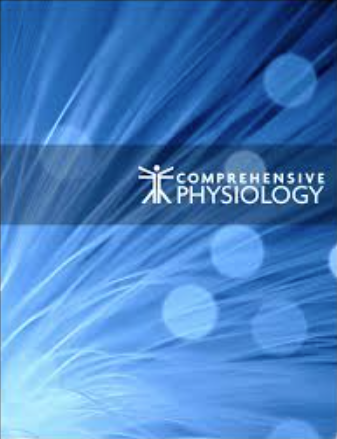求助PDF
{"title":"连续血流左心室辅助装置治疗的生理学。","authors":"Andrew N Rosenbaum, James F Antaki, Atta Behfar, Mauricio A Villavicencio, John Stulak, Sudhir S Kushwaha","doi":"10.1002/cphy.c210016","DOIUrl":null,"url":null,"abstract":"<p><p>The expanding use of continuous-flow left ventricular assist devices (CF-LVADs) for end-stage heart failure warrants familiarity with the physiologic interaction of the device with the native circulation. Contemporary devices utilize predominantly centrifugal flow and, to a lesser extent, axial flow rotors that vary with respect to their intrinsic flow characteristics. Flow can be manipulated with adjustments to preload and afterload as in the native heart, and ascertainment of the predicted effects is provided by differential pressure-flow (H-Q) curves or loops. Valvular heart disease, especially aortic regurgitation, may significantly affect adequacy of mechanical support. In contrast, atrioventricular and ventriculoventricular timing is of less certain significance. Although beneficial effects of device therapy are typically seen due to enhanced distal perfusion, unloading of the left ventricle and atrium, and amelioration of secondary pulmonary hypertension, negative effects of CF-LVAD therapy on right ventricular filling and function, through right-sided loading and septal interaction, can make optimization challenging. Additionally, a lack of pulsatile energy provided by CF-LVAD therapy has physiologic consequences for end-organ function and may be responsible for a series of adverse effects. Rheological effects of intravascular pumps, especially shear stress exposure, result in platelet activation and hemolysis, which may result in both thrombotic and hemorrhagic consequences. Development of novel solutions for untoward device-circulatory interactions will facilitate hemodynamic support while mitigating adverse events. © 2021 American Physiological Society. Compr Physiol 12:1-37, 2021.</p>","PeriodicalId":10573,"journal":{"name":"Comprehensive Physiology","volume":null,"pages":null},"PeriodicalIF":4.2000,"publicationDate":"2021-12-29","publicationTypes":"Journal Article","fieldsOfStudy":null,"isOpenAccess":false,"openAccessPdf":"","citationCount":"3","resultStr":"{\"title\":\"Physiology of Continuous-Flow Left Ventricular Assist Device Therapy.\",\"authors\":\"Andrew N Rosenbaum, James F Antaki, Atta Behfar, Mauricio A Villavicencio, John Stulak, Sudhir S Kushwaha\",\"doi\":\"10.1002/cphy.c210016\",\"DOIUrl\":null,\"url\":null,\"abstract\":\"<p><p>The expanding use of continuous-flow left ventricular assist devices (CF-LVADs) for end-stage heart failure warrants familiarity with the physiologic interaction of the device with the native circulation. Contemporary devices utilize predominantly centrifugal flow and, to a lesser extent, axial flow rotors that vary with respect to their intrinsic flow characteristics. Flow can be manipulated with adjustments to preload and afterload as in the native heart, and ascertainment of the predicted effects is provided by differential pressure-flow (H-Q) curves or loops. Valvular heart disease, especially aortic regurgitation, may significantly affect adequacy of mechanical support. In contrast, atrioventricular and ventriculoventricular timing is of less certain significance. Although beneficial effects of device therapy are typically seen due to enhanced distal perfusion, unloading of the left ventricle and atrium, and amelioration of secondary pulmonary hypertension, negative effects of CF-LVAD therapy on right ventricular filling and function, through right-sided loading and septal interaction, can make optimization challenging. Additionally, a lack of pulsatile energy provided by CF-LVAD therapy has physiologic consequences for end-organ function and may be responsible for a series of adverse effects. Rheological effects of intravascular pumps, especially shear stress exposure, result in platelet activation and hemolysis, which may result in both thrombotic and hemorrhagic consequences. Development of novel solutions for untoward device-circulatory interactions will facilitate hemodynamic support while mitigating adverse events. © 2021 American Physiological Society. Compr Physiol 12:1-37, 2021.</p>\",\"PeriodicalId\":10573,\"journal\":{\"name\":\"Comprehensive Physiology\",\"volume\":null,\"pages\":null},\"PeriodicalIF\":4.2000,\"publicationDate\":\"2021-12-29\",\"publicationTypes\":\"Journal Article\",\"fieldsOfStudy\":null,\"isOpenAccess\":false,\"openAccessPdf\":\"\",\"citationCount\":\"3\",\"resultStr\":null,\"platform\":\"Semanticscholar\",\"paperid\":null,\"PeriodicalName\":\"Comprehensive Physiology\",\"FirstCategoryId\":\"3\",\"ListUrlMain\":\"https://doi.org/10.1002/cphy.c210016\",\"RegionNum\":2,\"RegionCategory\":\"医学\",\"ArticlePicture\":[],\"TitleCN\":null,\"AbstractTextCN\":null,\"PMCID\":null,\"EPubDate\":\"\",\"PubModel\":\"\",\"JCR\":\"Q1\",\"JCRName\":\"PHYSIOLOGY\",\"Score\":null,\"Total\":0}","platform":"Semanticscholar","paperid":null,"PeriodicalName":"Comprehensive Physiology","FirstCategoryId":"3","ListUrlMain":"https://doi.org/10.1002/cphy.c210016","RegionNum":2,"RegionCategory":"医学","ArticlePicture":[],"TitleCN":null,"AbstractTextCN":null,"PMCID":null,"EPubDate":"","PubModel":"","JCR":"Q1","JCRName":"PHYSIOLOGY","Score":null,"Total":0}
引用次数: 3
引用
批量引用


